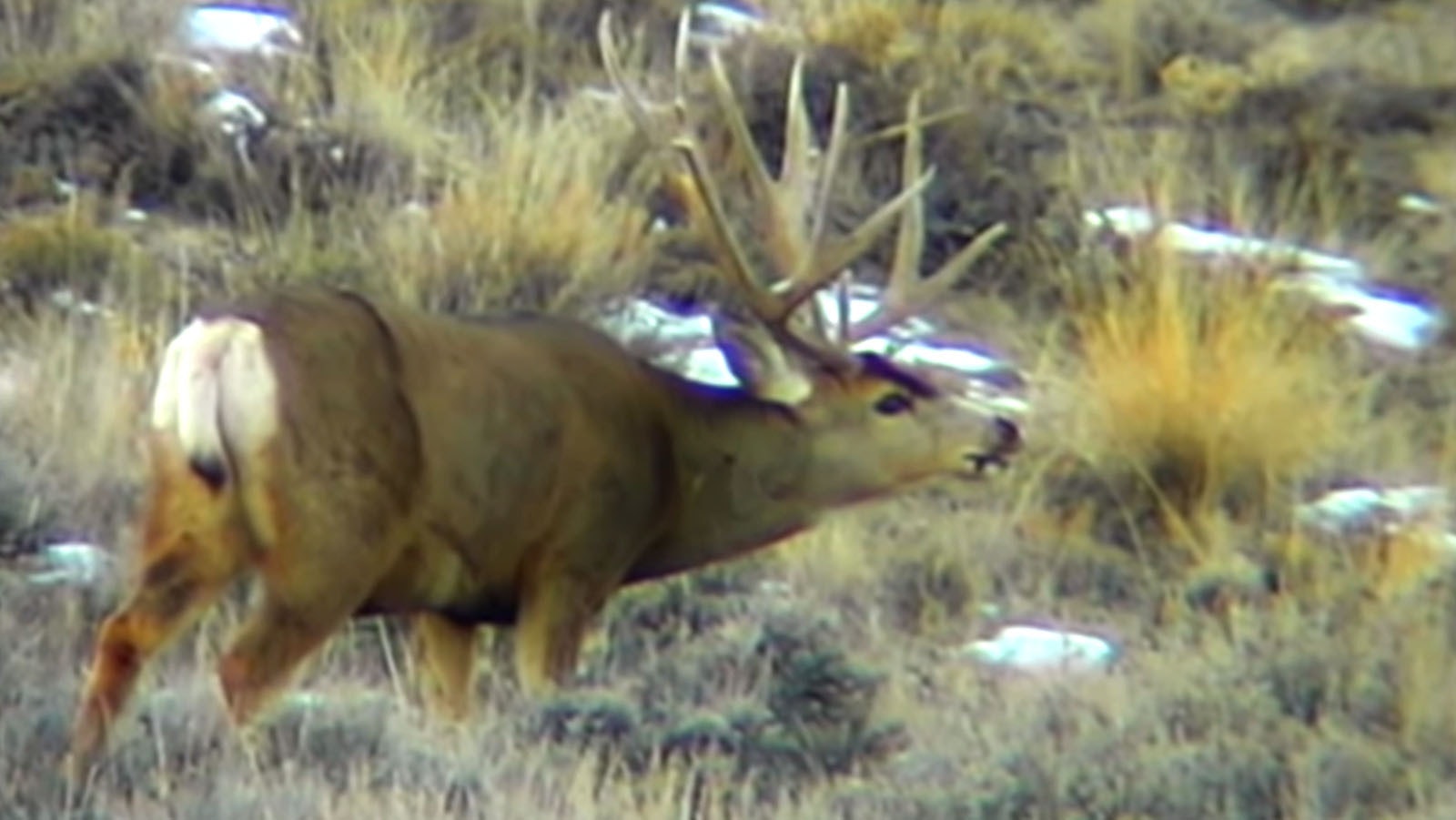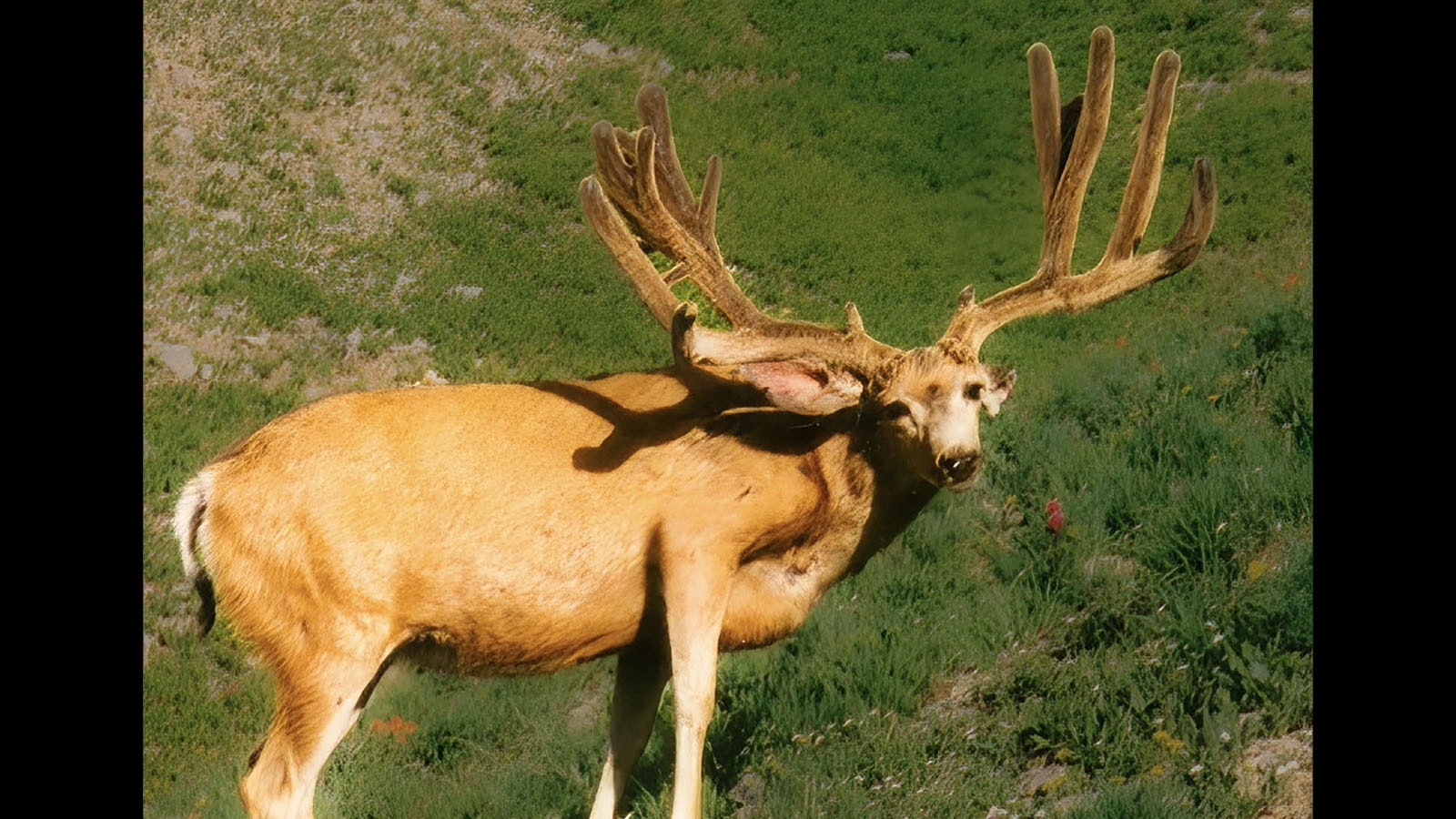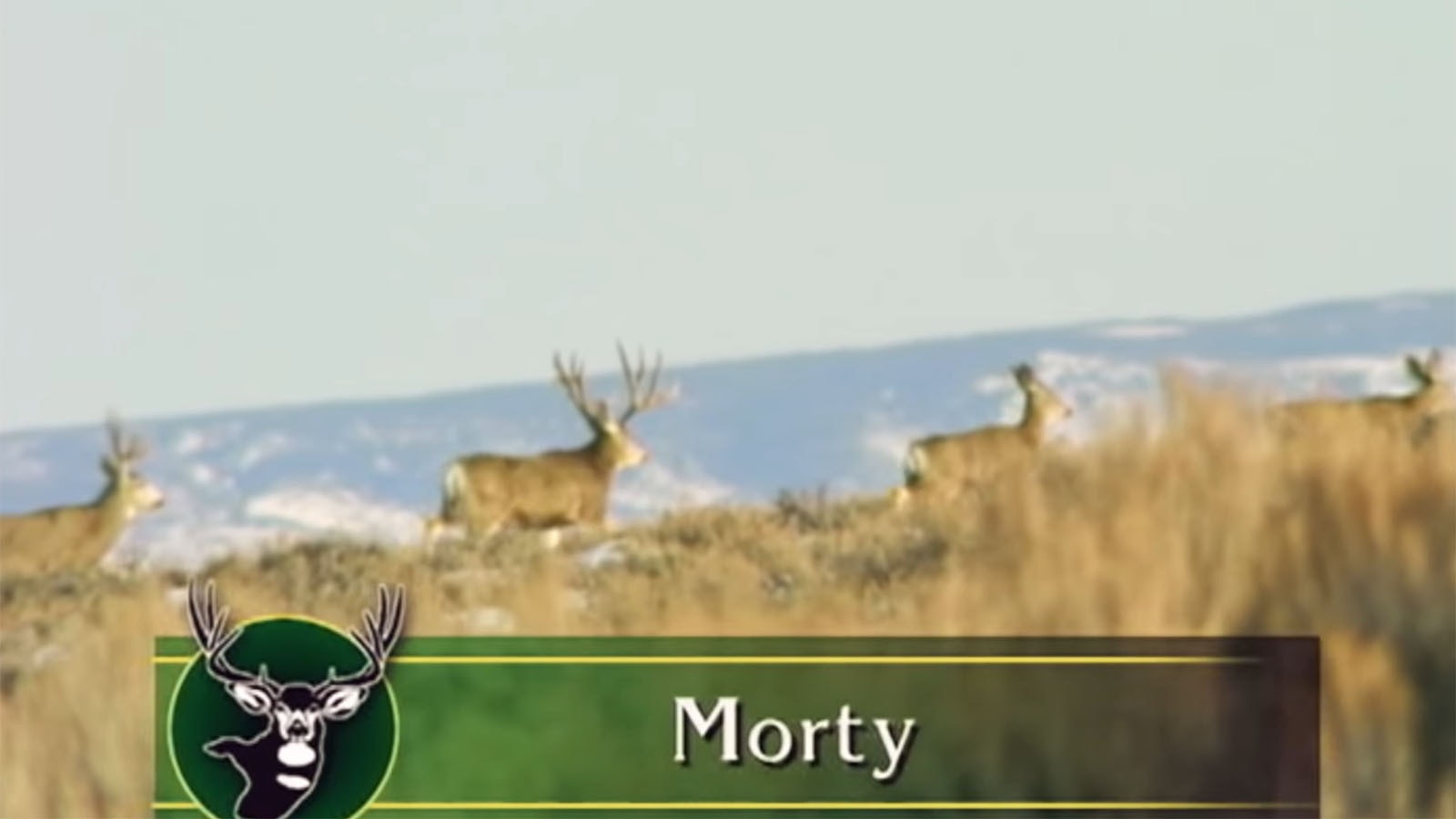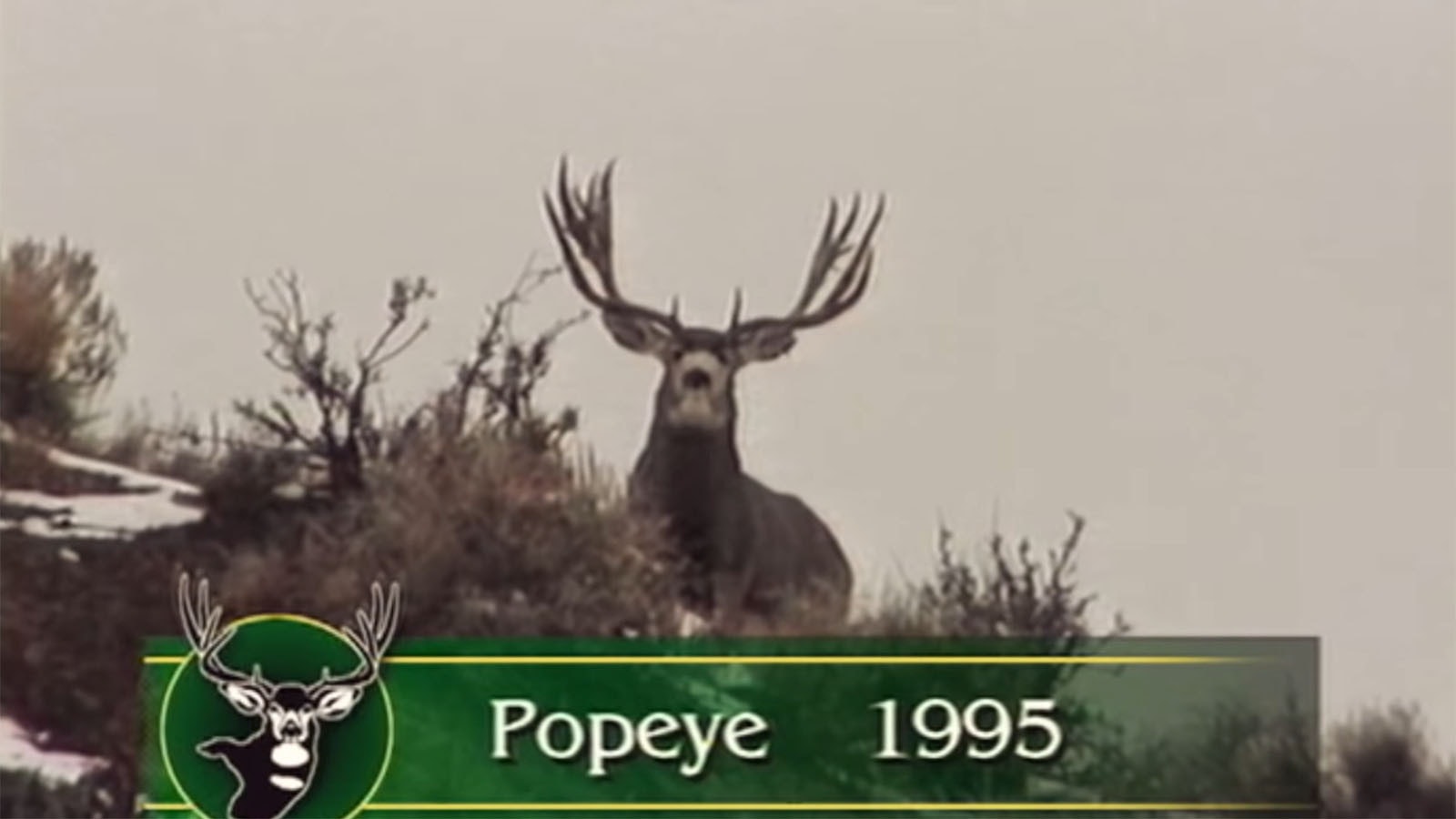Though it’s been three decades, Mike Eastman can still clearly recall the sheer excitement in his brother Rod’s voice as he described the absolute monster of a buck he’d found on public land in Sublette County.
“He told me, ‘You’ve got to see this deer. His outside spread must be over 40 inches. We call him Popeye, because your eyes will pop out when you see him,” Eastman, who now lives in Park County, told Cowboy State Daily.
Popeye spent most of his life on public land in Wyoming. And every fall, many a hunter tried to get Popeye in his crosshairs. They all failed. The huge buck died of old age in the late 1990s.
But even today, if you mention his name to just about any hunter, anywhere in the country, they’ll know you aren’t talking about the cartoon sailor.
The same goes with the monikers, “Morty” and “Goliath” – two other tremendous bucks that lived in died in Wyoming around that same time. Utter those names in any hunting camp or lodge, and watch people’s eyes light up.
And among those hunters, you might find a bottle of Wyoming Whiskey commemorating each of the bucks.
Few of Wyoming’s wild critters have maintained such an enduring legacy.
And it’s largely thanks to Eastman.
“I’m the one that made (the bucks) famous. I came up with the idea of calling them ‘Wyoming’s Living Legends,” Eastman said.
“People talk about them even now. I just can’t believe that people are still talking about it,” he added.
He started publishing magazines from his kitchen table, and went on to make his family’s name synonymous with fair-chase, public land, Western big game trophy hunting.
Eastman is now retired, and his sons run Eastmans’ Publishing Inc. – based in Powell. The company produces some of the most widely-respected magazines, books, films and television shows about hunting in Wyoming and the rest of the West.
Remembering The Old Herds
Back in the 1980s and '90s, the Internet was still in its infancy, and social media sites as we know them today were nonexistent.
Eastman was no stranger to pursuing big game animals – with a bow, rifle, still film camera or movie camera.
His father, Gordon Eastman, had filmed and produced wildlife movies. And growing up in the Jackson area, Eastman had watched wildlife and hunted since he was a child.
Mule deer herds from the Wyoming Range, Wind River Range and the surrounding areas have become the stuff of legend, but back then they were mostly a secret local gold mine for hunters.
The deer would spend their summers in the high country. And when winter hit, they’d move into the almost unimaginably vast flatlands around Big Piney and La Barge.
“Back when I was a teenager in the 1960s and early 70s, we had thousands and thousands of deer wintering down there,” Eastman said.
During hunting season, it wasn’t uncommon to drop a gigantic mule deer from among those herds, he said.
In addition to vast numbers, those deer herds had great genetics and access to lots of forage loaded with nutrients – just the right combination to develop jaw-dropping antlers.
But many hunters back then didn’t realize what they’d gotten in the way of world-class trophies, Eastman said. Few bothered to have their bucks’ antlers officially scored according the record book standards of the prestigious Boone and Crockett Club (B&C).
“Back in the 60s and 70s, huge bucks would be killed and some would be measured and some wouldn’t be. A lot of guys would shoot deer and wouldn’t know if they would be big enough to go into the Boone and Crockett books, or what Boone and Crockett even was,” Eastman said.
Going Viral, The Old School Way
About the time that Popeye was discovered, Eastman said his brother and friend started filming another exceptional buck on the winter range. They started calling him “Morty” – though Eastman can’t recall why.
And another devoted mule deer fan and avid hunter, David Long, showed Eastman some film footage he’d captured of a third giant buck.
“David Long named that buck ‘Goliath,’” Eastman said.
And so, the ‘Wyoming Living Legends’ trio had been discovered and named. But they needed publicity.
Blasting things out across the digital landscape wasn’t an option in those days. So, Eastman promoted the deer from his magazines. And he also gave in-person presentations. A lot of them.
“If there’s a town that you can name in any Western state, I probably went there and lectured to hunters about these bucks,” Eastman said.
He also published a book in 1996, “Hunting High County Mule Deer” that featured the mighty trio and had a photo of Popeye on the cover. And later he produced a “Wyoming Living Legends” DVD.
A Long-Trekking Buck
With the arrival of spring, Morty would head into the Gros Ventre Mountains while Popeye and Goliath would make their way into the Wyoming Range.
Eastman said he managed to trace Popeye’s trail to his summer haunt, on the west side of the Salt River Mountain Range.
“I never told anybody where he summered. I never told them where he went,” Eastman said.
During the fall migration, Popeye would make an epic trek.
“He’d head up and over the Salt River Range, cross the Greys River, go up and over the Wyoming Range, come out through the Horse Creek drainage and then head south down by La Barge to winter there,” Eastman said.
Popeye, Morty and Goliath kept trekking all over Wyoming for years, leaving scores of frustrated hunters in their wake.
A hunter from Salt Lake City finally caught up with Goliath one fall. Morty, like Popeye, died of old age. By about 1997, as Eastman recalls, the big bucks were all gone, but their legend had only begun to grow.
By The Numbers
Eastman said he doesn’t know the hunter that shot Goliath, or what the buck’s final B&C antler score was.
But shed antlers collected from all three animals reveal they were all record-book class.
Bucks “drop” or shed their antlers in the late winter or early spring. Over the summer they grow a new set that is usually larger than last set.
Popeye’s antlers from 1994-1995 had a gross score of 207 and 6/8 inches along the main frame, plus 37 6/8 “non typical” features, such as unusual antler points, Eastman said.
The largest set of his antlers ever recovered had a gross B&C non-typical score of 250 and 2/8 inches, with an outside spread of at least 40 inches, Eastman said.
The “outside spread” referrers to the widest point between the two sides of the antlers.
“And 40 inches was us being conservative. It could have been 41 or 42,” Eastman said.
Morty probably had a best typical gross score of around 217, and Goliath was somewhere in the 220-inch range, he added.
“These were world class, truly world-class Wyoming mule deer bucks,” Eastman said.

Commemorative Whiskey
Shawn Blajszczak of Powell is a former game warden and the Wyoming regional director of the Mule Deer Foundation.
When Popeye, Morty and Goliath were alive, he was just a young kid. He doesn’t recall knowing or caring much about the bucks at that time. Even so, he recalls hearing grown-ups talk about them. But, like many who were young, or not even born, when the Living Legends were alive, he’s a huge fan.
The Mule Deer Foundation, Eastmans’ and Wyoming Whisky teamed up over the past three years to produce commemorative bottles of whiskey for each of the three bucks.
The “Popeye” whiskey was produced in 2021 and “Morty” in 2022, and this year, it’s time for “Goliath.”
Sales of the whiskey have “ in just the first two years put more than $50,000 on the ground for mule deer conservation in Wyoming,” Blajszczak said.
He said the lasting allure of Popeye, Morty and Goliath probably stems from them being “sort of the everyman’s deer.”
“I think it was the fact that people could find them out in the field themselves, and that there was that opportunity for people to see them, and possibly hunt them,” Blajszczak said.
He added that getting the word out about the Wyoming Living Legends was a feat on the part of Eastman and others involved that can truly be appreciated.
“They (the bucks) were getting publicized, and it was well before the internet was advertising every deer, everywhere,” Blajszczak said.
“Now everyone can take 7,000 shots with their cell phone and pick out the right one. Whereas how many people back then were willing to go out and take 7,000 shots with a film camera and have to develop all of that film to get the right one?” he added.
Mark Heinz can be reached at mark@cowboystatedaily.com.








